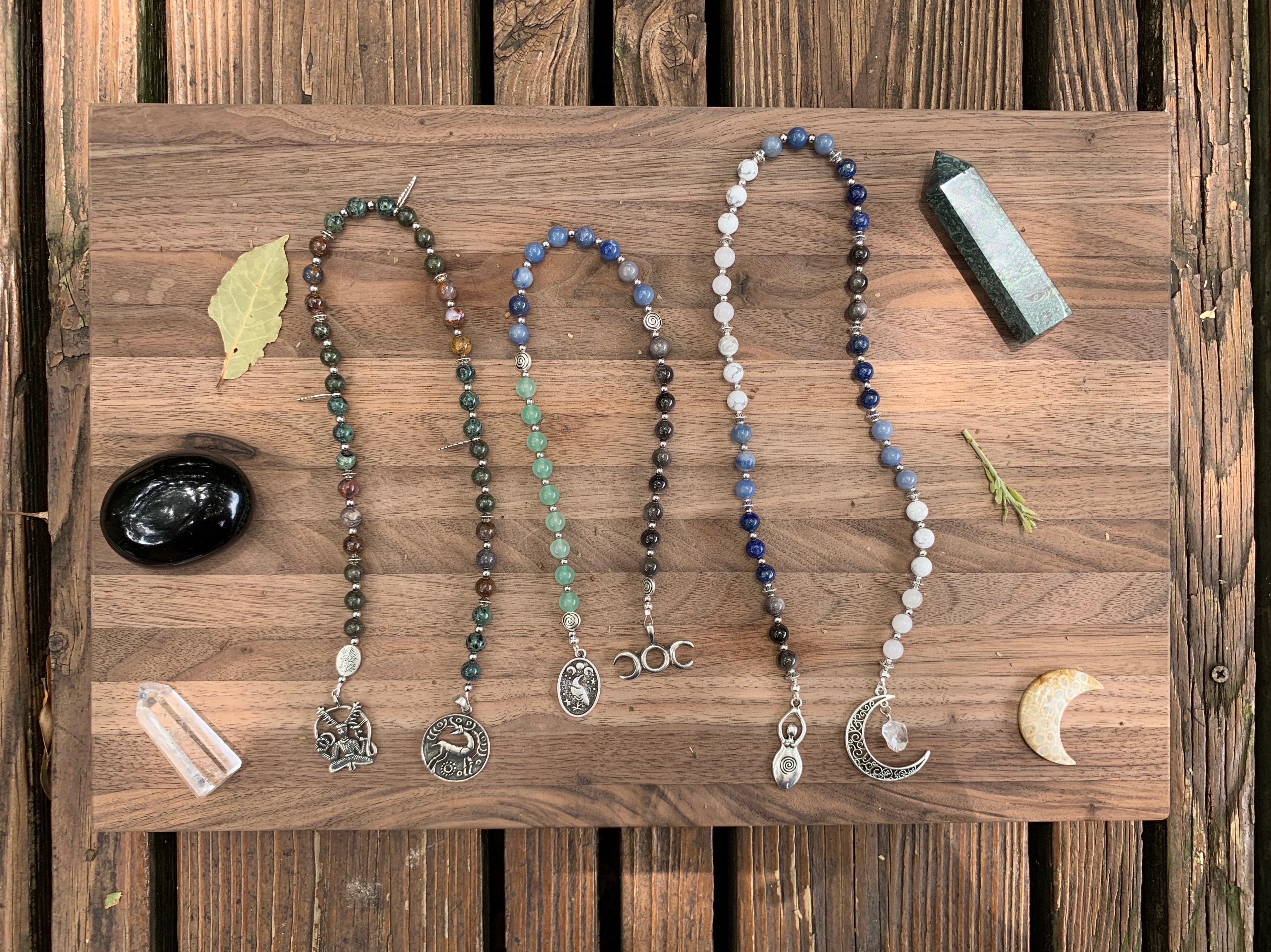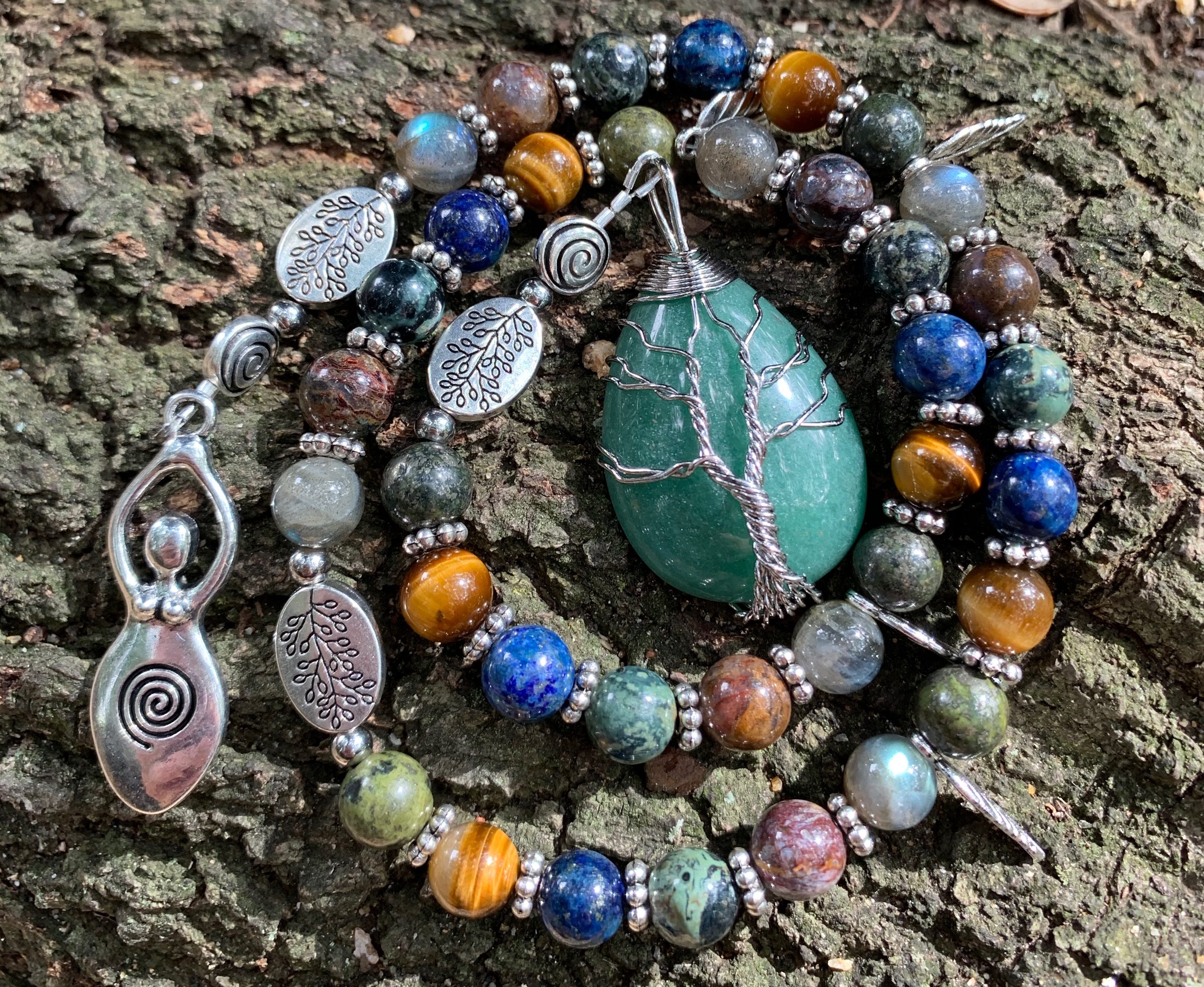
What are pagan prayer beads? Prayer beads have been used by humans for thousands of years to connect with the divine, enter trancelike states, and honor gods and goddesses.
The Catholic rosary is one of the most well-known types of prayer beads, and is the first variety that comes to mind for many people. But the use of beads in religious contexts is universal across nearly all faiths, and dates back to the pre-Christian era.
History of Prayer Beads
The oldest known image of prayer beads is found in a fresco painting at the prehistoric settlement of Akrotiri, in modern-day Santorini, Greece. This mural, which depicts a woman handling a string of prayer beads, dates back to 1613 BC.

Prayer beads are also used in Buddhism, Hinduism, Islam, Sikhism, and other religions around the world. While the exact way in which these beads are used varies across faiths, all of these prayer beads have one thing in common: they are designed to deepen and enhance spiritual practices.
Meditation beads are similar to prayer beads. They may be used to enter a deeper state of meditation, recite a positive mantra a specified number of times, or even for relaxation. Worry beads were used in Ancient Greece as a protective amulet, status symbol, and simply for entertainment.
All of that to say, there is no single faith, religion, or culture that can claim ownership of the use of prayer beads or meditation beads.

How Do Pagans Use Prayer Beads?
Many pagans use strands of beads in their spiritual, religious, meditative, or magical practices. Pagan prayer beads are just as diverse and eclectic as pagans themselves!
You can find prayer beads that honor the forces of nature, Wiccan prayer beads, Hellenic prayer beads, Druid prayer beads, Norse pagan prayer beads, Heathen prayer beads, Anglo-Saxon prayer beads, and many other variations.
Some pagan prayer beads are dedicated to specific gods and goddesses, while others represent broader pagan themes. For example, you could have a set of pagan prayer beads that were specifically constructed to honor the Norse goddess Freya, or you could have pagan prayer beads depicting the five elements (Earth, Air, Fire, Water, and Spirit), or one of the Wiccan sabbats.

Traditionally, prayer beads are used to help practitioners keep track of how many repetitions of a prayer they have completed, while enabling them to stay focused on the prayer itself. But pagan prayer beads and pagan meditation beads can be used in all sorts of spiritual, though not necessarily religious practices.
For instance, you could hold a set of pagan prayer beads while reciting an intention you want to manifest, balancing your chakras, honoring your ancestors, or performing a ritual spell.
You could also use pagan prayer beads to guide your breathwork during meditation or mindfulness exercises. For example, one cycle of breath in and out per bead. This would be a wonderful morning ritual to help you head into each day feeling grounded and centered.

Perhaps the simplest way to use pagan prayer beads is by placing them on your altar as an offering to your deities, or just for decorative purposes. You can also keep your pagan meditation beads on your nightstand, in your kitchen, in your car, or anywhere else you visit frequently and would like to channel some protective energy.
Pagan Prayer Beads Are Highly Personal
No matter which pagan beliefs and ideologies you adhere to or what your daily practice looks like, pagan meditation beads are a wonderful way to enhance your workings and stay connected to the divine – whatever that looks like for you.
The more you use your pagan prayer beads, the more of your own personal magic, energy, and power you will infuse them with. The repetition of thousands of prayers, mantras, and spells over time can make your pagan beads very powerful objects.





Leave a Reply